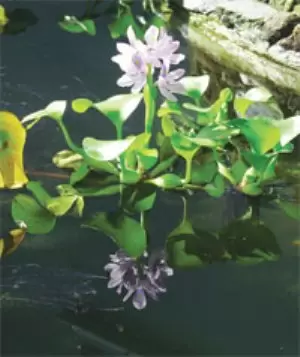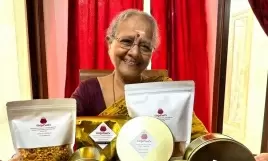Water hyacinth can be used to make biodegradable plastic

21-September-2012
Vol 3 | Issue 38
Water hyacinth is considered one of the most notorious aquatic weeds. It proliferates rapidly in lakes, dams and irrigation channels and chokes them. But scientists have now shown that the infamous weed is a rich source of carbohydrate and can be used to make biodegradable plastic.
Past studies have shown that carbohydrates derived from weeds and grass can yield plastic material.
 |
|
Water hyacinth is a rich source of carbohydrate polymers (Photo: Down to Earth)
|
This led researchers at Manonmaniam Sundaranar University in Tirunelveli, Tamil Nadu, to turn their attention towards water hyacinth. They found that water hyacinth-derived sugar molecules like lignin, cellulose and hemicellulose can be converted into polyhydroxybutyrate (PHB), a polymer that is a raw material for making biodegradable plastic.
Currently, plastics and synthetic polymers are derived from petroleum-based raw material like polyvinyl chloride and polypropylene. These do not decompose.
Plastics developed using PHB are compostable. Also, making PHB from natural resources can reduce cost and harmful gas emissions.
To make PHB, researchers dried and crushed water hyacinth into a fine powder and subjected it to acid and enzyme treatment in the presence of water. The end product was used to grow Cupriavidus necator, a bacterium known to produce PHB, in the presence of organic and inorganic nitrogen sources.
As the bacteria grew, PHB was found to accumulate inside them. Researchers ruptured the bacterial cells using an alkaline solution and extracted the PHB.
Maximum PHB, 4.3 grams per litre, was obtained from the bacteria cultured using the products of enzymatic breakdown of water hyacinth powder. “PHB can have potential applications in a wide variety of fields such as industrial, biomedical, agricultural, domestic, and automobile,” says lead researcher A G Murugesan.
“The quality of PHB derived from hyacinth is similar to PHB from other sources. The advantage with using water hyacinth as raw material is that it is available free of cost throughout the year,” he adds.
The study is set to appear in the October issue of Bioresource Technology.
By arrangement with Down to Earth
















